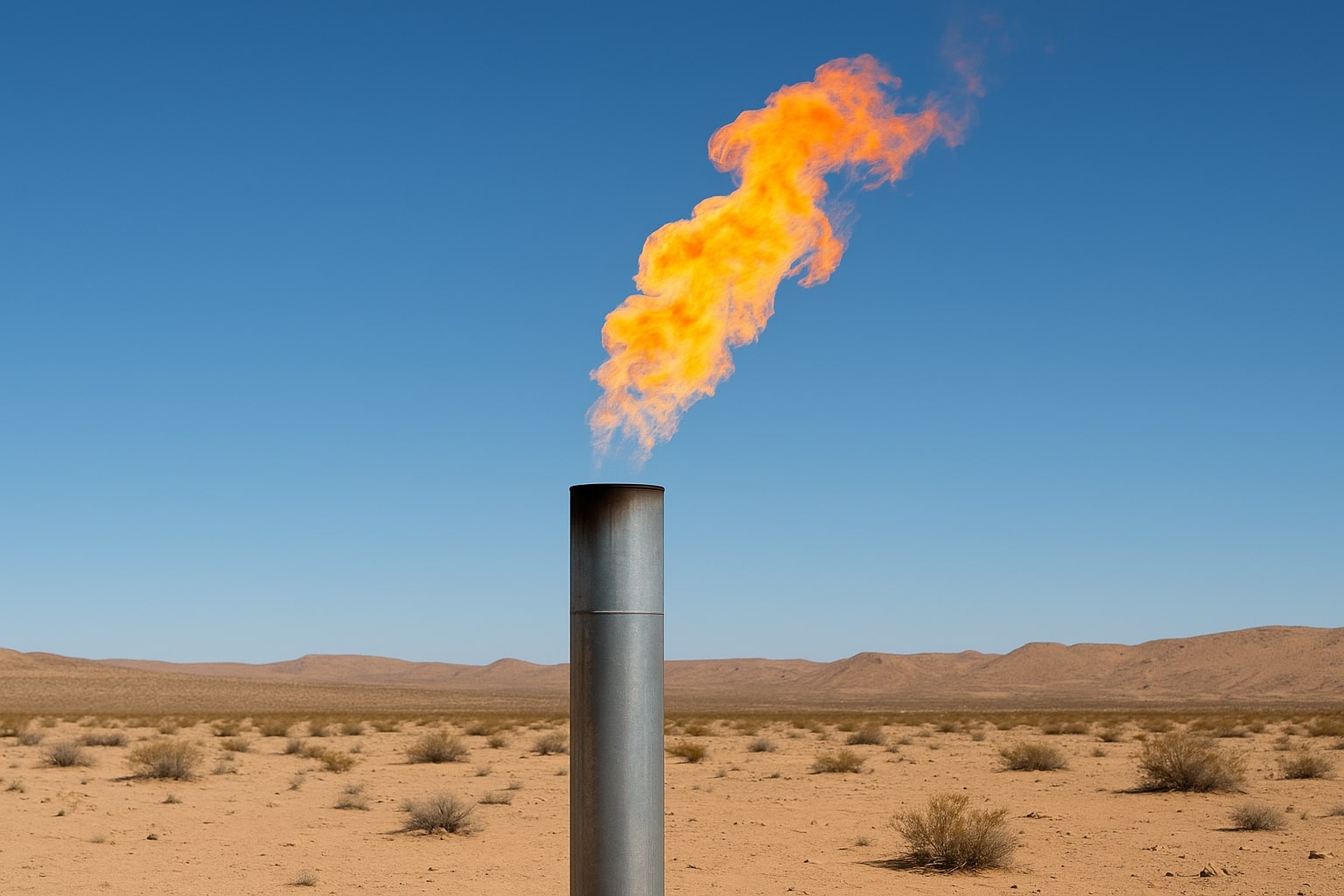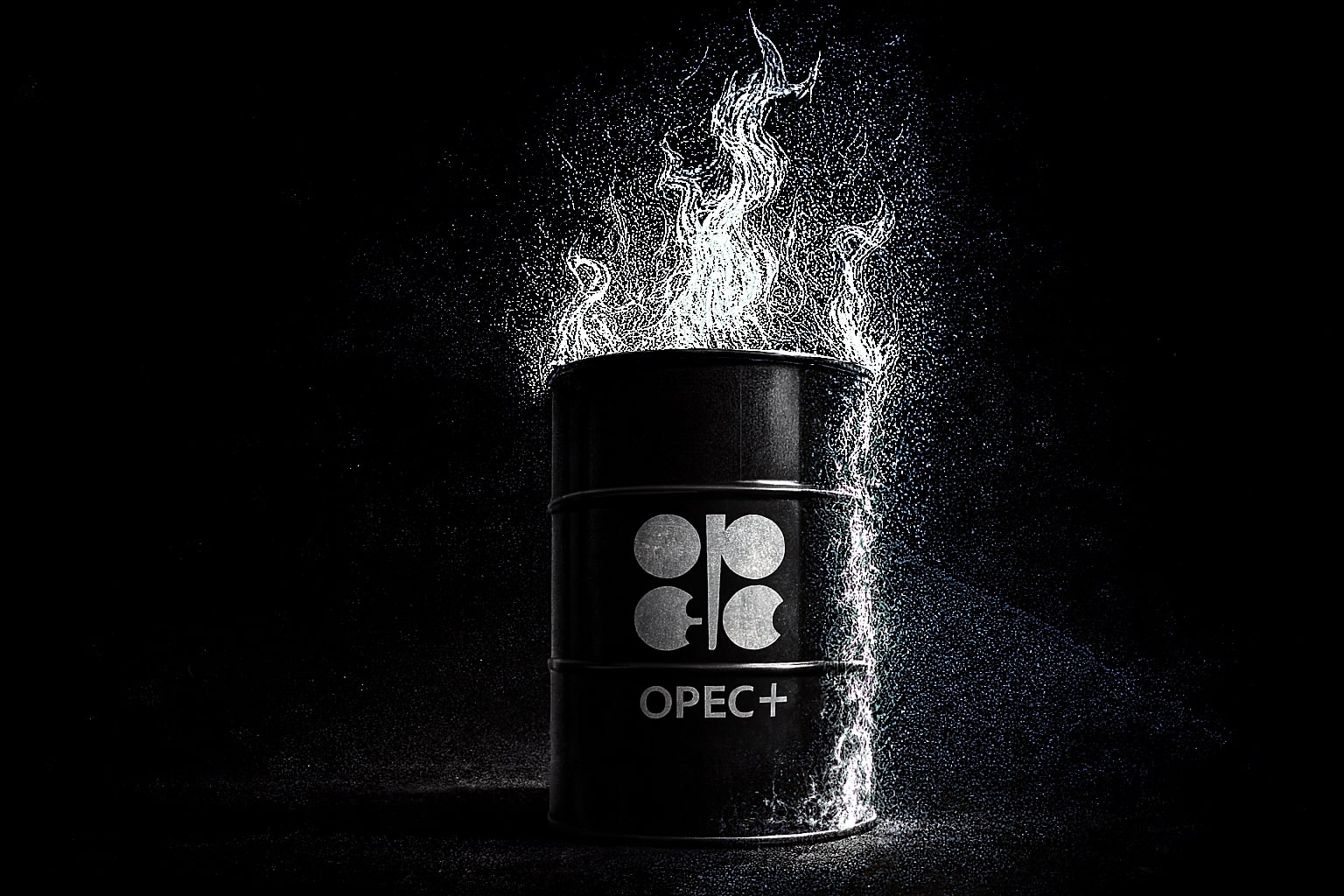
Natural Gas Falls Below $3.275 As Bears Target $2.88 On Supply Surplus And Cooling Demand
With inventories surging and LNG flows stalling, NG=F struggles to hold $3 support as traders brace for deeper losses | That's TradingNEWS
Supply imbalance widens as NG=F breaks $3.27 and eyes $2.88 downside
Natural gas futures plunged below $3.275 this week, breaking critical multi-month support levels and pointing toward $2.885 as the next significant technical target. This move reflects growing bearish pressure from a convergence of factors: record-high U.S. storage levels, subdued power burn demand from cooling weather forecasts, and weakened LNG flows out of Gulf terminals. According to the EIA, inventories are now 6.2% above the five-year seasonal norm, despite sitting 5.8% lower year-over-year. The most recent +55 Bcf injection also exceeded consensus expectations of +49 Bcf, confirming market oversupply conditions.
Supply remains resilient. Lower-48 dry gas production was clocked at 104.8 Bcf/day, up 3.9% from the same period last year, while demand has fallen sharply to 77.9 Bcf/day — a 6.8% year-over-year drop. LNG net flows to U.S. export terminals slipped to 15.0 Bcf/day, down 2.5% from the previous week. This imbalance is now firmly in control of market direction, as cooling weather in the East and Midwest reduces the urgency for air conditioning demand, weighing on short-term power burn forecasts. Vaisala and Atmospheric G2 both revised temperature models lower for the July 13–22 period, with cooler trends stretching across key demand hubs.
Canadian inflows counter U.S. production dip but basis collapse deepens
U.S. production has slipped from record highs, with Wood Mackenzie estimating output at 103.7 Bcf/day — down 2 Bcf/day from recent monthly averages. However, this modest pullback was countered by strong Canadian imports, which reached 6.5 Bcf/day, above both the 30-day average and historical seasonal benchmarks. This is keeping the Lower 48 well supplied and placing downside pressure on Henry Hub prices.
AECO-Henry Hub basis spreads have collapsed to their lowest levels in over two decades, with the differential widening to –$2.36/MMBtu as of July 8. AECO cash prices remain depressed due to local oversupply and pipeline constraints, particularly in Alberta, where maintenance bottlenecks continue to restrict export capacity. With Western Canada struggling to balance its own system and Henry Hub increasingly driven by export-linked demand, the structural chasm between regional hubs is unlikely to normalize soon. These wide basis conditions create distorted price signals and challenge arbitrage opportunities for traders betting on a convergence.
Bearish weather trends hammer price floor while LNG outlook remains fragile
Weather remains a decisive bearish influence. The updated NOAA and Atmospheric G2 models now show below-normal cooling degree days (CDDs) for the next two weeks, especially in the Midwest and East. From July 13–22, temperature moderation is expected to blunt demand from power generators, just as wind output recovers from a recent lull. Combined with light wind forecasts early this week, traders initially hoped gas burn might hold — but with the reintroduction of moderate conditions, the bearish tone has been reinforced.
LNG exports remain mixed. Venture Global pushed production higher in Q2, exporting 51 cargoes from Plaquemines terminal — a 75% increase over Q1, with realized prices of $7.09/MMBtu. However, this bullish flow was offset by week-over-week weakness across broader Gulf exports. Spot net flows to terminals dipped 2.5% to 15.0 Bcf/day, with some terminals idling on maintenance or delayed commissioning. While exports remain structurally strong, the lack of growth pace has become a concern for near-term bulls betting on capacity bottlenecks abroad.
Technical breakdown intensifies as sellers pressure $2.88 zone
Natural gas remains in a strong downtrend, with August Nymex futures falling 2.11% on Tuesday to settle at $3.35. The $3.275 level had acted as a reliable support floor for multiple weeks but has now been convincingly breached. Technical analysis points to the next downside pivot at $2.885 — a level where some short-covering could emerge, though sentiment remains bearish unless a catalyst drives sharp volume higher.
Short interest remains heavy, and any bounce toward $3.574 will likely be met with resistance. The 50-day and 200-day EMA cluster near $3.793–$3.800 is acting as a magnet for bears, who are using it as a ceiling to initiate fresh shorts. RSI momentum sits in neutral territory, but price action is clearly one-directional. Without a material weather shock or export spike, short-covering bounces will likely be temporary.
Storage trends confirm oversupply with injections running hot across U.S. and EU
Gas storage continues to run above trend. Last week’s EIA injection came in at +55 Bcf, well above consensus and above the prior week’s build of +49 Bcf. As of June 27, inventories were 3.34 Tcf, 6.2% above the five-year norm. Europe’s gas storage is also tracking above historical trendlines. As of July 6, EU storage levels were 61% full, compared to a seasonal average of 70% for this time of year. While that marks a slight tightening from last year’s glut, it still reinforces the global theme of high availability and minimal near-term risk of undersupply.
Forward contracts for winter 2026 and 2027 remain elevated relative to historical delivery ranges, but near-dated contracts for 2025 are stuck in the median band. This shows long-term pricing remains inflation-aware, while short-term volatility is being dictated more by storage dynamics than by structural changes in demand.
Power burn supportive but insufficient to reverse trend
Electricity output continues to grow, which should be supportive for nat-gas demand on paper. According to Edison Electric Institute, Lower-48 electricity generation for the week ended July 5 rose 1.0% year-over-year to 93,747 GWh. Over the past 52 weeks, output rose 2.4% to 4,247,938 GWh. This increase theoretically supports base-level gas burn, but with cooler weather tamping down peak usage and renewables like wind starting to contribute more heavily, the gas demand boost is not translating into higher prices.
Until cooling demand spikes or wind output collapses, electricity burn is acting as a soft cushion — not a tailwind.
Rig count trends confirm cautious upstream sentiment
Baker Hughes reported U.S. nat-gas rig counts fell by one to 108 during the week ending July 4. This puts the total slightly below the 15-month high of 114 but still well above the 4-year low of 94 recorded in September 2024. Producers appear hesitant to ramp drilling further, despite strong long-term demand narratives from LNG, as short-term oversupply and poor price realizations keep capital discipline tight.
Production discipline from Appalachia and the Permian has softened slightly, but not enough to shift the overall equation. Without a broader pullback, rig activity is likely to remain rangebound near current levels.
Verdict: Bearish short term — Sell rallies below $3.57, target $2.88
All data points to a bearish short-term structure for Natural Gas (NG=F). With storage levels high, production outpacing demand, and cooling weather forecasts reducing power burn, prices are likely to remain under pressure. The breakdown below $3.275 confirms the bearish bias, and $2.885 now stands as the next key support zone.
Traders should avoid long exposure unless prices reclaim $3.574 on volume. Until then, rallies toward $3.50–$3.57 are opportunities to sell. The forward curve remains structurally skewed, but near-term contracts will remain weak without a weather shock or sharp LNG reversal. The technical chart and supply-demand math both favor a Sell rating on natural gas through late July.
That's TradingNEWS
Read More
-
SMH ETF: NASDAQ:SMH Hovering at $350 With AI, NVDA and CHIPS Act Fueling the Next Move
16.12.2025 · TradingNEWS ArchiveStocks
-
XRP ETFs XRPI and XRPR: Can $1B Inflows Lift XRP-USD From $1.93 Back Toward $3.66?
16.12.2025 · TradingNEWS ArchiveCrypto
-
Natural Gas Price Forecast: NG=F Falls to $3.80–$3.94 as Warm Winter Kills $5.50 Spike
16.12.2025 · TradingNEWS ArchiveCommodities
-
USD/JPY Price Forecast - USDJPY=X Slides, BoJ 0.50% Hike, Fed Cut and NFP Set the Next Big Move
16.12.2025 · TradingNEWS ArchiveForex



















